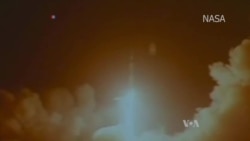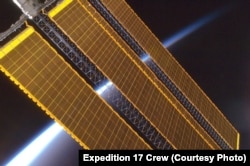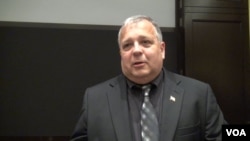Since the last mission to the moon, half a century ago, space enthusiasts have been talking about a trip to Mars.
President Barack Obama this week reiterated the call for a U.S. mission to Mars that he first proposed in April 2010. He called for a partnership with private sector companies to develop the means to send humans to and from Mars by the 2030s.
But a mission to Mars is fraught with challenges.
A major problem is radiation. Earth is protected from cosmic rays by its magnetic field, but astronauts on a mission that would take many months could suffer major health problems en route as their vehicle is bombarded by radiation.
Another problem is political. Critics in the U.S. Congress want to know why the country should spend billions of dollars to go to Mars if there is no practical reason to do so. Private companies may find some commercial value in a Mars adventure, but skeptics question whether they can achieve their plans without massive funding from the government.
Still another hurdle is the time scale, according to Paul Spudis at the Houston-based Lunar and Planetary Institute.
“Any program where the payoff is 20 to 30 years in the future is, effectively, a dead issue in Congress, he told VOA, “because they do not deal in timescales like that. They deal in timescales from two to 10 years.”
All of these problems with Mars are why some space experts are returning to the idea of using the moon as a first step in accomplishing a long-range plan to get to the red planet.
'Fly me to the moon'
During the administration of President George W. Bush, experts developed a plan to return to the moon to test equipment for a Mars mission. But that plan was later scrapped in favor of a long-term project to go directly to Mars, even though it might take 20 or 30 years to accomplish.
In his recently published book, “The Value of the Moon, How to Explore, Live, and Prosper in Space Using the Moon’s Resources,” Spudis makes the case for a moon base, partly because it is relatively close by and is in continual orbit of earth.
“Effectively, you can get to the moon in a minimal amount of time,” he said, “it is only three days to the moon and three days back.”
What’s more, he argues, previous NASA missions have shown that the moon has useful resources, like frozen water at its poles.
“So, I have energy. I have materials. I can live on the moon. I can make rocket propellant,” he said.
The rocket fuel would come from using electricity from a large array of solar cells to break apart the two elements that make up water.
“By taking the hydrogen and oxygen from cracking the water and disassociating with electricity and then freezing those gases into liquids that is the most powerful chemical propellant we know of,” Spudis said.
Pros and cons
At a recent gathering of scientists and space enthusiasts at Rice University for the “Lost in Space 2016” conference, there was a lot of support for returning to the moon from people like former NASA astronaut Leroy Chiao.
“We can train crews,” he said. “We don’t necessarily want the first crew on Mars to be rookies. We can train crews on the Moon.”
But Michael Lembeck, Board Chairman of U.S. Space, LLC, favors using the moon as a staging base and questions using it as a refueling station for a Mars rocket.
“If we talk about actually making the trip to Mars on chemical propulsion that could be a dead end. We need high-speed transportation,” he said.
But Paul Spudis argues that chemical fuel is well-tested and available. “The fundamental problem with a lot of the advanced propulsion systems, for example, the plasma rockets and nuclear thermal propulsion, is that they require technology that we do not have.”
Lunar demo
Spudis proposes a plan that would use robots to do much of the preliminary work on the moon, starting with tests of the polar water resource.
“The next step, he said, “is to actually land a demonstration experiment, where you show that you can dig up the ice. You can extract it and store it as water. Once that is done, we will have effectively demonstrated all the pieces we need to show that we can go back to the moon to stay.”
But to carry out such a plan either the United States, another country with a space program or a private company would have to commit to the project with a lot of money.
One use of the moon that might prove valuable in the nearer term, according to Spudis is using a base on the moon to place and maintain satellites in orbit in “cislunar” space, that is, the space between the earth and the moon.
He said this could lead to big distributed communication systems that would be far better than anything that exists today. Given the importance satellites for modern life on earth, such use of the moon might prove very cost effective.












